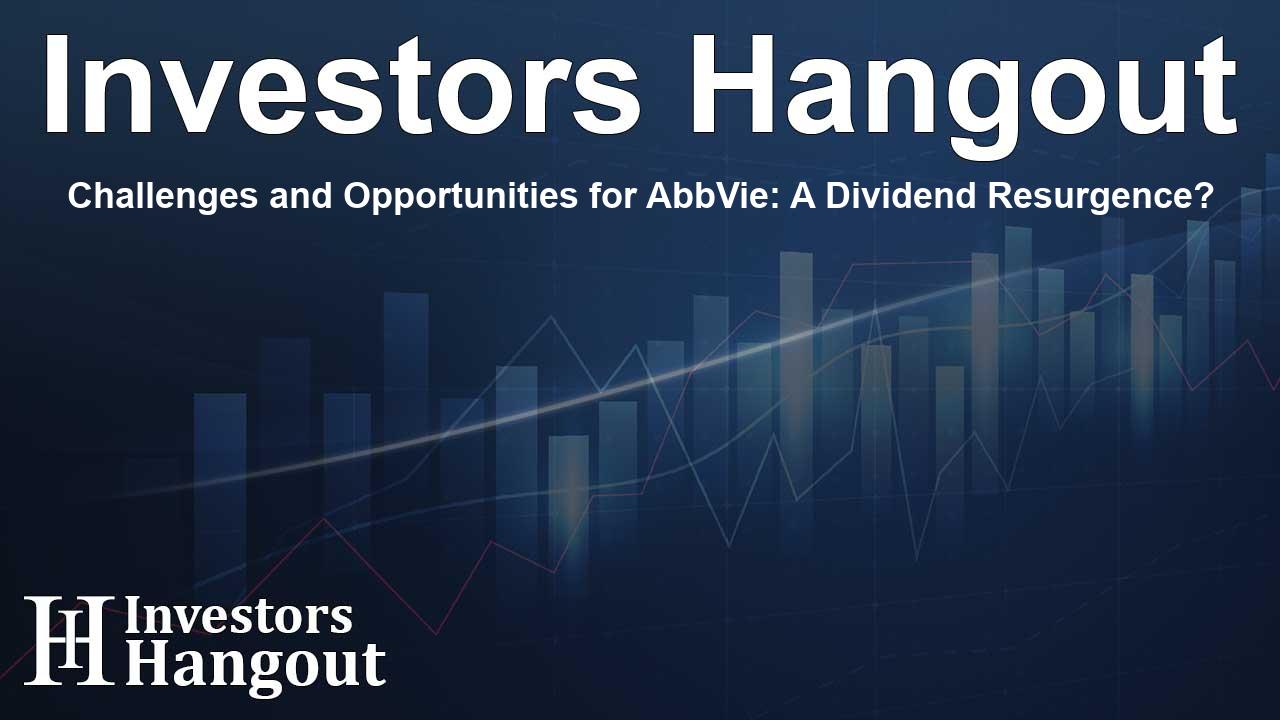Challenges and Opportunities for AbbVie: A Dividend Resurgence?

AbbVie: From Dividend Star to Navigating Difficulties
AbbVie (NYSE: ABBV) has long been a favorite for dividend growth investors ever since it separated from Abbott Laboratories. The company previously wowed the market with an average annual payout increase of 13.4% during its first ten years as an independent entity. However, the situation has shifted, and AbbVie is now dealing with some significant challenges.
The main driver of AbbVie's revenue, Humira, has lost its U.S. patent protection in 2023. This change paves the way for biosimilar competitors to gradually erode Humira's market share. As a result, AbbVie’s once strong dividend growth is now experiencing a marked slowdown.
Current Dividend Developments
Investors have begun to notice a significant decline in AbbVie’s dividend growth rate. Over the past three years, the company has only managed a growth rate of 3.2%, a stark difference from the impressive average of 10.5% seen over the last decade. This decline, largely due to the patent expiration of Humira and rising competition from biosimilars, raises serious questions about the future stability of its dividend.
Despite these hurdles, AbbVie still offers a current dividend yield of 3.19%, which is above the sector average of 3.12%. Furthermore, the company’s five-year dividend growth rate stands at a solid 6.1%, remaining competitive with its peers and reaffirming AbbVie’s commitment to its shareholders during these tough times.
Financial Overview: Concerns and Caution
A closer examination of AbbVie’s financial health highlights growing concerns regarding the sustainability of its dividend payments. With an alarming debt-to-equity ratio of 10.4, the company finds itself in a delicate financial situation. The substantial debt limits AbbVie’s operational flexibility, potentially hindering future dividend raises.
Additionally, AbbVie’s payout ratio is extraordinarily high at 216.7%, significantly surpassing the average of 141% among its competitors. Distributing more than double its earnings in dividends raises concerns about the company's long-term viability. Statistically, firms with payout ratios above 75% run a higher risk of cutting their dividends. Yet, AbbVie has a commendable history of 52 consecutive years of annual dividend increases, which suggests that immediate cuts are unlikely.
Immunology’s Bright Spot
On a more positive note, even as Humira loses its market dominance, AbbVie’s next-generation immunology treatments are flourishing. Skyrizi and Rinvoq have shown remarkable growth, with net revenues climbing by 45.6% and 59.2%, respectively, in their latest earnings report. These newer treatments are crucial in mitigating the downturn from Humira, which experienced a global sales drop of 29%.
AbbVie’s management is optimistic about these products, with projections for combined sales of around $27 billion by 2027. If these targets are met, it could set a strong foundation for future revenue growth and improve the company’s ability to maintain dividends amid a changing landscape.
Strategic Growth Initiatives
AbbVie’s recent strategic acquisitions highlight its commitment to achieving sustainable growth. The company has invested $8.7 billion in acquiring Cerevel Therapeutics, enhancing its neuroscience portfolio with promising clinical-stage candidates aimed at various mental health issues, which shows AbbVie’s dedication to innovation in healthcare.
Furthermore, the acquisition of cancer specialist ImmunoGen speeds up AbbVie’s efforts to treat solid tumors. With treatments like Elahere—approved for addressing difficult-to-treat ovarian cancer—AbbVie diversifies its range of offerings, potentially boosting earnings in the upcoming years.
Market Perspective on AbbVie
Investor sentiment towards AbbVie appears cautious regarding its future. Currently, its stock is trading at 14.2 times projected 2026 earnings, slightly below the average for established biotech companies, which is around 15 times. This conservative rating indicates that while investors find AbbVie interesting, many harbor doubts about the company’s capacity to adapt successfully after Humira’s decline.
For those investors adopting a contrarian stance, this market skepticism could represent an attractive investment opportunity, should AbbVie effectively harness its pipeline and acquisitions.
Looking Ahead for AbbVie
In conclusion, while AbbVie faces its share of hurdles—including slowed growth and concerning financial metrics—there are also signs of optimism. The remarkable progress made with its immunology drugs and strategic acquisitions position AbbVie positively in a competitive market. These factors foster a belief that the company has the potential to rebound as a solid dividend growth choice.
With promising strategic initiatives and a resilient product pipeline, long-term investors might find that this period of uncertainty is a great time to consider investing in AbbVie, positioning themselves for future growth in the evolving pharmaceutical landscape.
Frequently Asked Questions
1. What caused AbbVie’s dividend growth to slow down?
AbbVie’s dividend growth has slowed primarily due to the loss of U.S. patent protection for Humira, leading to increased competition and reduced revenue.
2. How does AbbVie’s current dividend yield compare to its peers?
AbbVie’s current dividend yield stands at 3.19%, slightly higher than the average yield of 3.12% among major pharmaceutical companies.
3. What is AbbVie’s payout ratio, and why is it concerning?
AbbVie’s payout ratio is 216.7%, which is concerning because it indicates the company is distributing more than twice its earnings in dividends, posing risks to sustainability.
4. Are AbbVie’s next-generation drugs performing well?
Yes, AbbVie’s next-generation drugs Skyrizi and Rinvoq are performing exceptionally well, with significant increases in net revenue that help offset the decline in Humira sales.
5. What should investors consider before investing in AbbVie?
Investors should weigh AbbVie’s current challenges against its solid pipeline and strategic acquisitions, reflecting both risks and potential growth opportunities moving forward.
About The Author
Contact Ryan Hughes privately here. Or send an email with ATTN: Ryan Hughes as the subject to contact@investorshangout.com.
About Investors Hangout
Investors Hangout is a leading online stock forum for financial discussion and learning, offering a wide range of free tools and resources. It draws in traders of all levels, who exchange market knowledge, investigate trading tactics, and keep an eye on industry developments in real time. Featuring financial articles, stock message boards, quotes, charts, company profiles, and live news updates. Through cooperative learning and a wealth of informational resources, it helps users from novices creating their first portfolios to experts honing their techniques. Join Investors Hangout today: https://investorshangout.com/
The content of this article is based on factual, publicly available information and does not represent legal, financial, or investment advice. Investors Hangout does not offer financial advice, and the author is not a licensed financial advisor. Consult a qualified advisor before making any financial or investment decisions based on this article. This article should not be considered advice to purchase, sell, or hold any securities or other investments. If any of the material provided here is inaccurate, please contact us for corrections.
